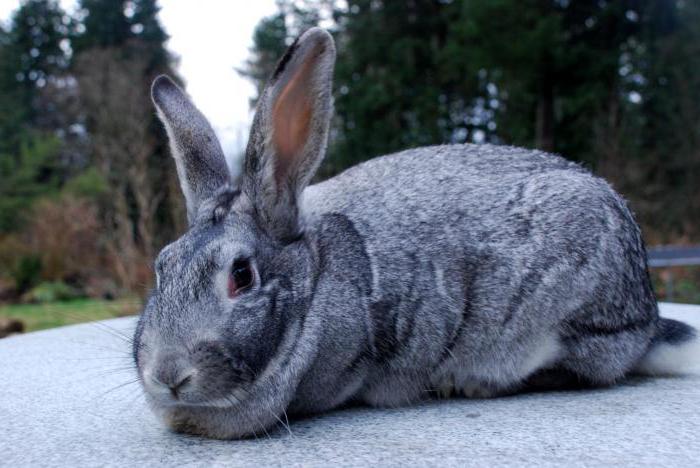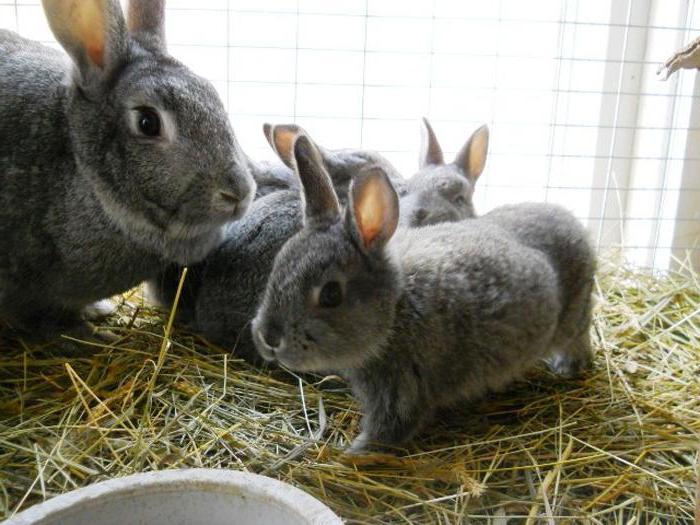Chinchilla rabbit is one of the best, valuable and modern breeds. It got its name due to the unusual fluffy wool, which in its quality is similar to the fur of wild chinchillas. In this article, we will talk about these amazing ears. The topics of breeding, proper maintenance, feeding and breed characteristics will be affected.
History and origin of the breed
This amazing subspecies of eared horns was bred in France. The chinchilla rabbit was made thanks to the ermine and the baverin breed. At the beginning of the last century, active experiments and breeding crosses were carried out. Only in 1913 the bred breed was presented at a French exhibition. The animals liked the animals so much that all the individuals were sold out in a few hours. The breed was brought to other countries. Within a couple of years, the subspecies has become widespread throughout the world. Individuals began to cross in Great Britain, the Netherlands, and Germany. Thanks to the continued selection of animals, they began to cross with giant subspecies. In the USSR, the breed was introduced in the early 60s. So that the animals could adapt to the climatic conditions of the country, they were crossed with a white giant. Thus, the Soviet chinchilla turned out.
Description of animals
After crossing with giants, instead of the usual 2 kg, animals began to weigh more than 4 kg. To date, livestock farmers breed both large individuals and miniature ones. Chinchilla rabbit has a large powerful head, elongated vertical ears. Because of this, his body seems shortened and graceful. The body length is 42-52 cm. Muscle is well developed in a large livestock. Thanks to this, animals have a strong skeleton. They have strong legs, a straight spine, smoothly turning into a rounded croup. The circumference of the chest is 28-38 cm. Females may have a fat fold that passes into the breast. Chinchilla colors differ only in color saturation. Both dark and light individuals are bred. The main color of animals is exclusively silver-blue. Wool practically does not differ from fur of wild chinchillas. The structure of the hair is thick, fluffy, does not have bald patches. The fur is very elastic. It grows throughout the body of a rabbit. Near the eyeball and on the stomach, the coat is the lightest. At the tips of the ears, the fur has a darker shade. The main characteristic feature is a different shade of eyes. Eyes can be brown, gray or blue.

Breeding Chinchillas
Females of this breed have average fertility rates. In one round, the female can endure no more than 6-7 babies. But such rabbits are highly milk. They are able to feed all their cubs. The female secretes 185-205 g of breast milk per day. Thanks to this, offspring quickly gain weight, grow stronger and grow. Mortality among babies of this breed is very low. Before the showdown, the female may begin to behave strangely. Usually rabbits become wild and begin to tear down fluff. Thus, the Soviet chinchilla equips its home. Thanks to maternal fluff, rabbits do not freeze and cannot die from hypothermia. Therefore, if the female does not perform such a procedure on her own, the rabbit breeder will have to rip out the fluff from it. Immediately after detecting pregnancy, an additional container must be put in. It is important that the boxes are not too high. The recommended container material is wood. When using plastic, chemicals can be released into the air that adversely affect the health of the female and her offspring. At the age of 120 days, young growth is considered completely mature and can already produce its offspring.

Content Features
Soviet chinchilla can be kept in pits, aviaries, cages with a mesh floor. Content can occur both outdoors and at home. It is worth considering that rabbits, like humans, are susceptible to various diseases and colds. Therefore, in the fresh air they must be kept in warm, calm weather. In winter, breeding in special heated sheds is allowed. The optimum temperature can vary from 15 to 21 ° C. A sharp increase and decrease in temperature should not be allowed. This negatively affects the health of individuals. When kept in a dry room, ventilation must be installed. Optimum lighting - 2 watts per 1 square. m. Do not allow direct sunlight. Maintenance in rooms without windows leads to infertility and a decrease in immunity. Neighborhood with rodents - rats, moles, field mice should not be allowed . Such animals are carriers of various diseases.
Proper diet
Chinchilla rabbit does not require a specific diet. Simple granular feed, silage and bran are sufficient for animals. Individuals need fresh green grass, branches of fruit and deciduous trees. In small quantities, medicinal herbs can be given. Every day, rabbits should receive vitamins, trace elements from fresh vegetables and fruits. Animals especially like fresh carrots. But cabbage, salad, beets must be given in small portions. Otherwise, the animals will begin diarrhea. Also, do not forget about fresh drinking water. Access to drinking bowls in individuals should be constant. When thirsty, rabbits can become aggressive and wild.
Advantages of the breed
- The main advantage that a chinchilla has is its content on the mesh field. The paws are positioned so that the mesh does not cut into the pads. Therefore, it is allowed to use a metal mesh with small cells - 16x18 cm.
- This breed is unpretentious. It does not require specific care, feeding and special maintenance. Great for inexperienced rabbit breeders.
- Kids have increased vitality. The female has high milk production rates. Can feed all their offspring.
- The cost of feed pays off very quickly. Individuals belong to meat-and-hide subspecies. They have delicious dietary meat intended for baby food. As well as thick chic fur, similar to the pile of wild chinchillas.
- Animals have a calm, kind disposition. Quickly attached to a person. May be kept as pets.